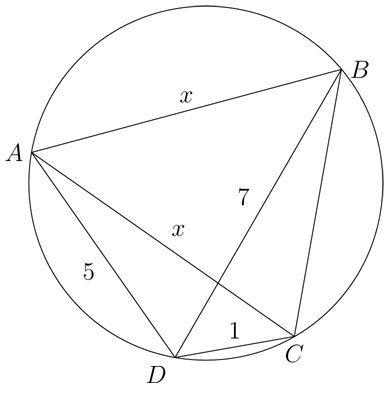- #1
anemone
Gold Member
MHB
POTW Director
- 3,883
- 115
Points A, B, C, D are on a circle with radius R. \(\displaystyle |AC| = |AB| = 500\), while the ratio between \(\displaystyle |DC|\), \(\displaystyle |DA|\), \(\displaystyle |DB|\) is 1, 5, 7. Find R.


